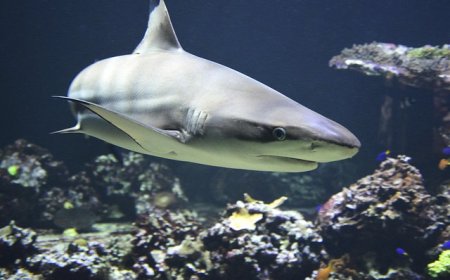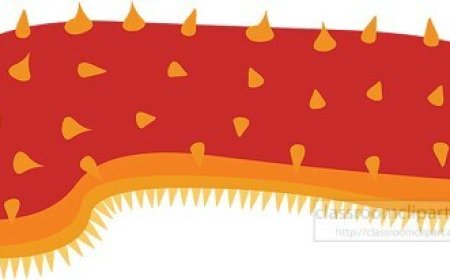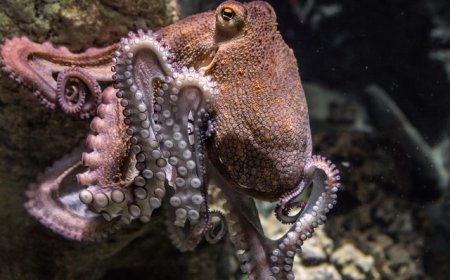Scallop Facts for Kids – Swimming Bivalves with Brilliant Blue Eyes
Discover scallops for kids. Learn how they swim, where they live, and why their blue eyes are so amazing.
🐚 Scallops: Swimming Bivalves with Brilliant Blue Eyes
Scallops are amazing sea creatures that look like clams—but behave very differently! These bivalve mollusks live inside two fan-shaped shells and can do something clams and mussels cannot: swim through the water by clapping their shells together.
With their rows of bright blue eyes, powerful muscles, and ability to filter the ocean, scallops are an important part of marine ecosystems—and a fascinating subject for ocean explorers of all ages.
🌍 Where Scallops Live
Scallops are found in oceans all around the world, especially in:
- Shallow coastal waters
- Sandy or muddy sea floors
- Coral reefs
- Seagrass beds
Some species live attached to rocks, while others lie freely on the sea bottom, ready to clap away from danger.
Scallops prefer clean, oxygen-rich water, where they can filter food and move easily.
🧬 Body Structure and Features
Scallops have a unique body inside their two shells:
- Two fan-shaped shells (valves) that open and close
- A strong adductor muscle (the part we eat) to snap the shells shut
- A soft body with gills and mantle
- Tentacles and 30–100 tiny eyes around the edge of their body
- A hinge ligament that helps open the shell when relaxed
Scallop eyes are bright blue and reflective. Though they can’t see shapes clearly, they detect light, motion, and shadows, helping the scallop know when danger is near.
🍽️ How Scallops Eat
Scallops are filter feeders, which means they eat tiny particles from the water, like:
- Phytoplankton (tiny ocean plants)
- Algae
- Microscopic food particles
Here’s how they feed:
- Water enters the shell
- Gills filter out food and oxygen
- Waste and extra water are pushed back out
Scallops help keep ocean water clean by filtering it constantly!
🏊 Swimming and Movement
Unlike most other bivalves, scallops can swim!
They do this by:
- Clapping their shells together
- Forcing water out near the hinge
- Jetting themselves backward away from danger
This helps scallops escape predators like sea stars, crabs, and snails. Scallops don’t swim often, but when they do, it’s impressive and fast.
They can also crawl slowly using a tiny “foot” when needed, especially when young.
🐣 Life Cycle and Reproduction
Scallops reproduce by:
- Releasing eggs and sperm into the water (spawning)
- Fertilized eggs develop into free-swimming larvae
- After a few weeks, larvae settle on the bottom and grow into adults
Some scallops attach to surfaces as juveniles, while others remain free-living.
Most scallops reach adult size in 1 to 2 years, and some live up to 7 years or more.
🛡️ Defense and Survival
To stay safe, scallops rely on:
- Shell snapping to swim away
- Bright blue eyes to spot danger
- Camouflage-colored shells to blend in
- Firm shell closure to avoid being pried open
Predators include starfish, octopuses, crabs, and humans. If a scallop senses a predator, it may snap shut and clap away fast!
⚠️ Threats and Conservation
Scallops are fished in many parts of the world and are important in seafood markets. But they also face challenges.
🚨 Threats:
- Overfishing in some areas
- Pollution and poor water quality
- Loss of seagrass beds and habitats
- Ocean acidification, which affects shell growth
🛡️ Conservation efforts:
- Fishing limits and size rules
- Seafloor protection zones
- Cleaner coastal development
- Monitoring scallop populations
Sustainable scallop harvesting helps protect biodiversity and healthy seafloor ecosystems.
🎉 Fun Facts About Scallops
- Scallops have up to 100 tiny blue eyes around their body
- They are one of the few bivalves that can swim
- A scallop’s muscle (the part we eat) is one of the strongest in the animal kingdom
- Baby scallops are called spat
- Some scallops glow or reflect light like a mirror
🧠 Vocabulary List
- Bivalve – A mollusk with two shells hinged together
- Filter feeder – An animal that eats by filtering tiny food from the water
- Adductor muscle – The muscle that closes a scallop’s shell
- Larva – A baby scallop that floats before growing a shell
- Phytoplankton – Tiny ocean plants eaten by many sea animals
- Mantle – The part of a mollusk’s body that makes its shell
- Camouflage – Coloring that helps an animal blend in
- Hinge ligament – A soft band that helps a scallop open and close
- Ocean acidification – Ocean water becoming more acidic, making it harder for animals to grow shells
- Spawning – Releasing eggs and sperm into the water for reproduction
✅ Scallop Quiz: Shell Out Some Smart Answers!
1. How do scallops swim?
A. Flapping wings
B. Kicking with legs
C. Clapping their shells together
D. Using their eyes
✅ Answer: C. Clapping their shells together
2. What part of the scallop do people usually eat?
A. The shell
B. The eye
C. The adductor muscle
D. The gill
✅ Answer: C. The adductor muscle
3. What do scallops use to find light and movement?
A. Gills
B. Feet
C. Eyes around the edge of their body
D. Tentacles only
✅ Answer: C. Eyes around the edge of their body
4. What do scallops eat?
A. Fish
B. Sand
C. Plankton and algae
D. Shrimp
✅ Answer: C. Plankton and algae
5. Why are scallops important to the ocean?
A. They build coral
B. They chase predators
C. They filter and clean the water
D. They make bubbles
✅ Answer: C. They filter and clean the water
🧒 Kid-Friendly Summary
Scallops are cool shellfish that can swim by clapping their shells! They have dozens of tiny eyes, live on sandy sea floors, and help clean the ocean by filtering tiny food from the water.
If they spot danger, scallops can snap shut and jet away. They're small but mighty mollusks with big jobs in the sea—and they even have some of the prettiest eyes in the ocean!




















































